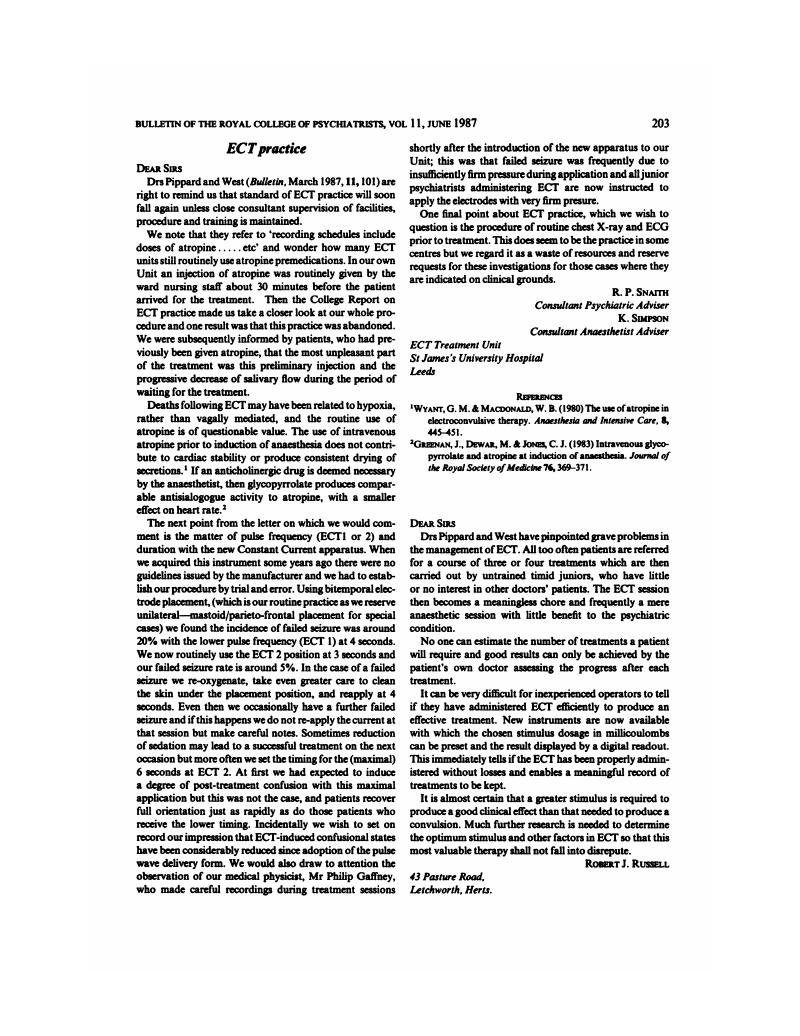Crossref Citations
This article has been cited by the following publications. This list is generated based on data provided by Crossref.
Bhatnagar, Kumud S.
1987.
ECT practice – failed seizures.
Bulletin of the Royal College of Psychiatrists,
Vol. 11,
Issue. 11,
p.
382.
Barry, Siobhan
and
Webb, Marcus G. T.
1988.
ECT practice-failed seizures.
Bulletin of the Royal College of Psychiatrists,
Vol. 12,
Issue. 3,
p.
102.
Scott, Allan I. F.
Shering, P. Anne
and
Dykes, Sheena
1989.
Would Monitoring by Electroencephalogram Improve the Practice of Electroconvulsive Therapy?.
British Journal of Psychiatry,
Vol. 154,
Issue. 6,
p.
853.
Niepoth, Daniela
1992.
Renten und rentenähnliche Leistungen im Einkommensteuerrecht.
p.
73.
Fear, Christopher F.
Littlejohns, Carl S.
Rouse, Eryl
and
McQuail, Paul
1994.
Propofol Anaesthesia in Electroconvulsive Therapy.
British Journal of Psychiatry,
Vol. 165,
Issue. 4,
p.
506.



eLetters
No eLetters have been published for this article.